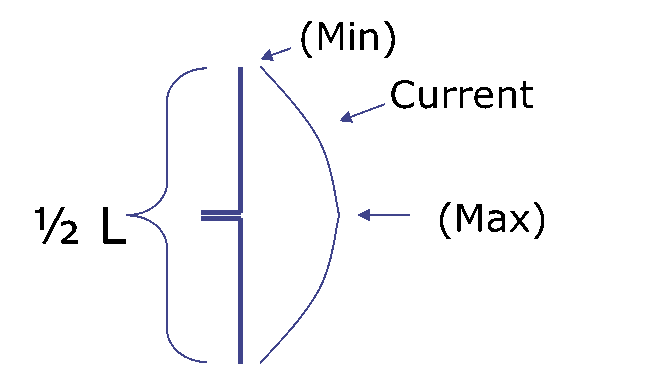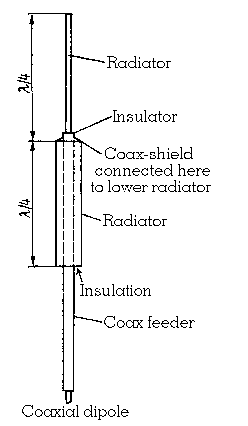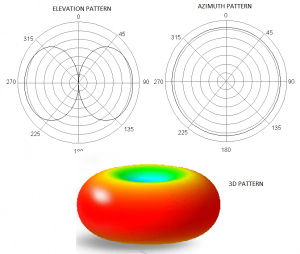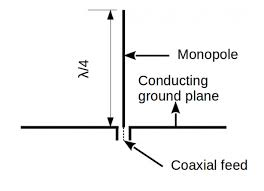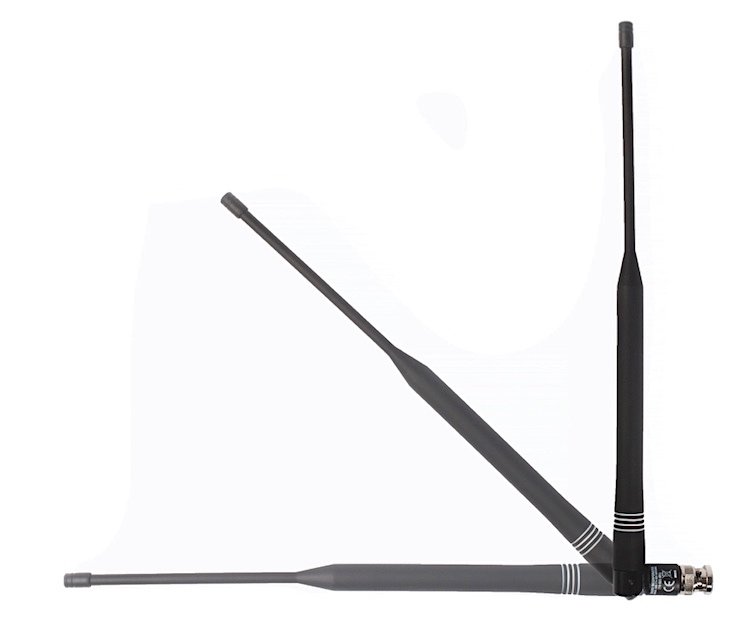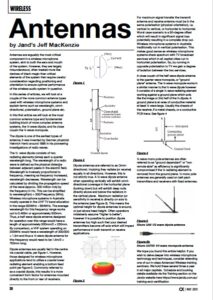News
10 May 2019
Antennas

Subscribe to CX E-News
Antennas are arguably the most critical component in a wireless microphone system, akin to both the ears and mouth of the system. However, they are largely misunderstood, often treated more like devices of black magic than critical elements of the system that require careful consideration regarding positioning and orientation to ensure optimal performance of the wireless audio system in question.
In this series of articles, we will look at a couple of the more common antenna types used with wireless microphone systems and explain terms such as wavelength, omni-directional, polarisation ground plane etc. In this first article we will look at the most common antenna type and fundamental building block of more complex antenna systems, the Half Wave Dipole, and its close cousin the quarter wave monopole.
The dipole is one of the earliest types of antenna; it was invented by German physicist Heinrich Hertz around 1886 in his pioneering investigations of radio waves.
The half wave dipole consists of two radiating elements (wires) each a quarter wavelength long. The wavelength of a radio wave is defined as the physical distance between adjacent peaks in the electric field. Wavelength is inversely proportional to frequency, meaning as frequency increased, wavelength decreases.
Wavelength can be calculated by dividing the propagation speed of the wave (approx. 300 million m/s) by the frequency in Hz. This can be simplified to wavelength(m) = 300/Frequency (MHz).
Wireless microphone systems in Australia mostly operate in the UHF TV band allocation in the range 520MHz – 694MHz. The average wavelength for this frequency range works out to 0.495m or approximately 500mm.
Thus, a half wave dipole antenna designed for operation over this range would have a length of approximately 500mm/2 = 250mm. By comparison, a VHF system operating on 200MHz would have a wavelength of 300/200 = 1.5m and thus a ½ wave dipole antenna for this frequency would need to be 1.5m/2 = 750mm long.
Commonly referred to as a coaxial dipole, this results in a more convenient form factor for antennas mounted directly to the front or rear of receivers. Dipole antennas are usually feed in the centre via coaxial cable (per figure-1). However, those designed for wireless microphone applications tend to be utilise a coaxial lower radiating element enabling a bottom feed point (per figure-2).
Dipole antennas are referred to as Omni-directional. Implying they radiate (or receive) equally in all directions. However, this is not strictly true.
A ½ wave dipole antenna when operating vertically will exhibit omni-directional coverage in the horizontal plane (looking down) but will exhibit deep nulls directly above and below the radiators in the vertical plane.
Maximum radiation (or sensitivity in receive) is directly on axis to the antenna (see Figure-3). This means the optimal height for dipole antennas is around, or just above head height. Often operators mistakenly assume “higher is better”, however it is possible to position dipole antennas too high such that your desired transmitters become off axis which will impact performance in both transmit or receive applications.
For maximum signal transfer the transmit antenna and receive antenna must be in the same polarisation (physical orientation), i.e. vertical to vertical, or horizontal to horizontal. Worst case scenario is a 90-degree offset which will result in significant signal loss potentially resulting in a complete drop out.
Wireless microphone systems in Australia traditionally run in vertical polarisation. This makes good sense as wireless microphone systems share spectrum with TV broadcast services which in all capital cities run in horizontal polarisation. So, by running in opposite polarisation to TV we gain a degree of isolation between the two services.
A close cousin of the half wave dipole antenna is the quarter wave monopole, or “ground plane” antenna. The ¼ wave monopole works in a similar manner to the ½ wave dipole however it consists of a single ¼ wave radiating element working against a ground plane which acts like the image or 2nd half of the ½ dipole.
A ground plane is an area of conductive material at least ¼ wave large. Usually the chassis of the receiver, if a metal chassis, or a conductive PCB trace. See figure 4
¼ wave mono pole antennas are often referred to as “ground dependant” or “non remote able” as efficiency is significantly compromised if the ¼ radiating element is removed from the ground plane. ¼ mono pole antennas are generally used on belt pack transmitters and receivers with fixed antennas.
We hope you found this article helpful. If you wish to delve deeper into wireless microphone technology and techniques, consider attending one of our in-class Advanced Wireless training seminars. We hold these several times a year in all major capitals. Schedule and booking details available via the Training section on the Jands website here: https://www.jands.com.au/training-and-certification
CX Magazine – May 2019 – Australia and New Zealand’s only publication dedicated to entertainment technology news and issues – available in print and online. Read all editions for free or search our archive www.cxnetwork.com.au
© CX Media
Further reading from CX Magazine’s Wireless Feature – May 2019:
Shure Reveal Twinplex. Mission: Take on DPA – by Julius Grafton
Wireless Voodoo – Not a Dark Art – by Fraser Walker
In-Ear Monitoring – by Sennheiser’s Adam Karolewski
Clear-Com FreeSpeak II – by The P.A. People’s Chris Dodds
Signal Out of the Noise – by Simon Byrne
Is that a wireless intercom in your pocket? – by Jand’s Jeff MacKenzie
Antennas for Wireless Microphones – by Jand’s Jeff MacKenzie
The Politics of Wireless – by Simon Byrne
Wireless Recordings – by Andy Stewart
From the archive – Wireless Mics feature, Connections Magazine, March 1999:
Radio Microphones (Sub-titled “How Did I Get Stuck With This Job!”) by John Matheson (includes a wireless systems Buyers Guide and Radio Spectrum Guide for Australia.)
Subscribe
Published monthly since 1991, our famous AV industry magazine is free for download or pay for print. Subscribers also receive CX News, our free weekly email with the latest industry news and jobs.

